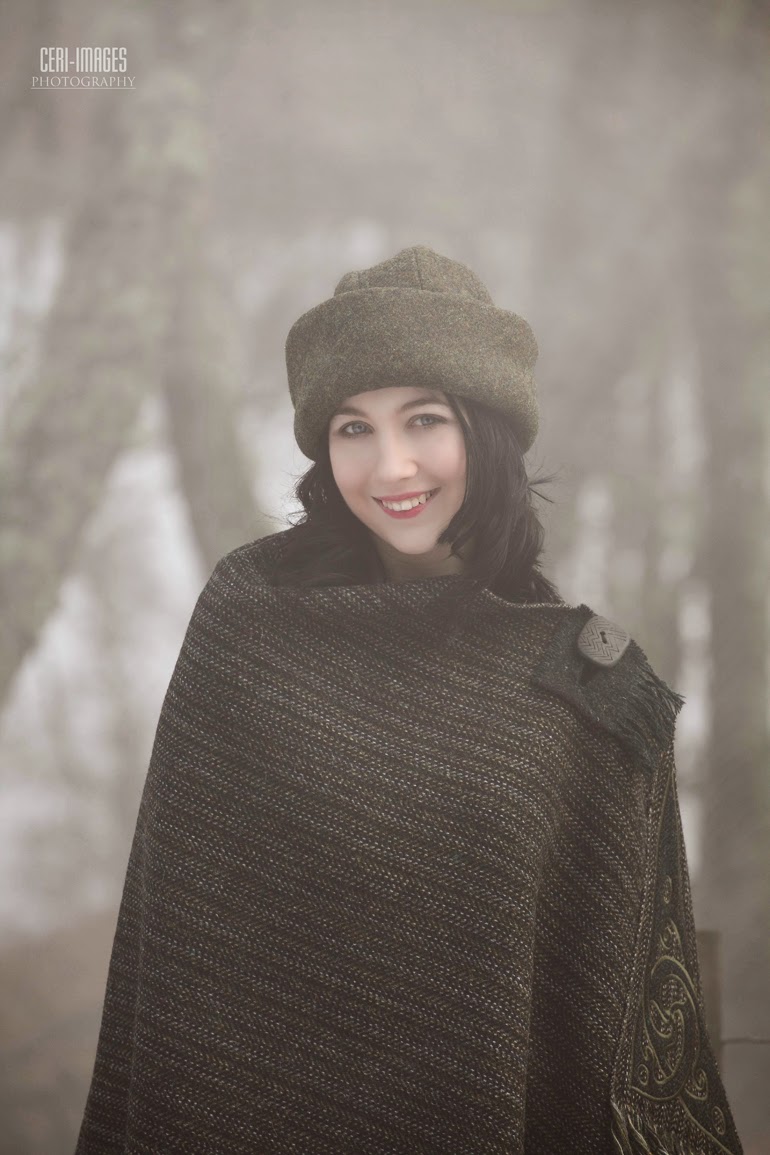Day 3 - 26th January, 2015
(If you have not seen the post on Days 1 & 2, click here)
The first task this day was to work on our text. It had been decided that we would use a traditional Gaelic Blessing that was used by George Bain in his book "Celtic Art, the Method of Construction".
 "May your steps return from all corners of the globe under the guidance of the start that points to home"
"May your steps return from all corners of the globe under the guidance of the start that points to home"At our last session, Rita had worked out the size and position for all the lettering and I had
taken the plan away and used it to cut some translucent vinyl sheets to use as stencils for needle-felting the letters onto the background.
We used lengths of ribbon pinned through the felt to provide base lines for the text and each person worked on a different word.
The words built up quickly by needling a lovely dark purple merino wool through the stencil onto the background felt. Our only problem was that we didn't quite plan the sequence for doing all the words, so we ended up having people trying to work too close to each other. This stage took most of the morning but it went faster than I had expected.
The final wet felting of the wallhanging has still to be done, so the needle felting does not need to be very thorough - just enough to ensure that the lettering stays in place once we soap it again and give it its final rubbing and rolling.
Once we were happy with it, we turned the felt over and did some more needling from the back - this gives extra security for the fibres. It is very easy to see where we needed to work as we could see all the fibres sticking through the white.
Once all the lettering was done, we were able to plan the zoomorphic designs that we want to use to fill the spaces above and below the text. Some of the team looked through the book for inspiration while others set about making some more half-felt to use for these designs.
 The rest of the team started work on the knotwork panels around the edges. The tramlines and overs & unders typical of Celtic knotwork was not as obvious as we would have liked, so they set about emphasising these by needlefelting fine lines to pick out the details.
The rest of the team started work on the knotwork panels around the edges. The tramlines and overs & unders typical of Celtic knotwork was not as obvious as we would have liked, so they set about emphasising these by needlefelting fine lines to pick out the details.Then, a final look before rolling up the felt and packing everything away till the next day.
And I had my homework to do! The designs for the zoomorphic had t obe transferred to the computer and from there to my laser cutting machine. This machine gives really accurate cutting allowing for more detail than can be achieved with a pair of scissors.
Day 4 - 28th January
This was more of the same - needle felting all day!
First off, we positioned the zoomorphic creatures - a bird above the text and a hound below. These were needlefelted all over, and then we concentrated on the overs and unders detail.
Once the creatures were fully needlefelted in place we took a break for cake!
Then it was back to work - more needle felting.................!
There was one corner that everyone was avoiding........... it has rather more detail in it than the other parts. The design is adapted from a badly weathered knotwork panel along one side of the magnificent Pictish cross slab in Groam House Museum. Last week Rita scaled up this design and I cut it from half-felt on my laser cutter. Rita had other commitments this week but had asked that we ensure there was an area of needlefelting left for her to do on her return. However, I took pity on her and made a start so that she can see which way the lines work.
It was a good day's work and we are all happy with the result.
To see the start of this project, click here.
To read about how we finished it, click here.























































